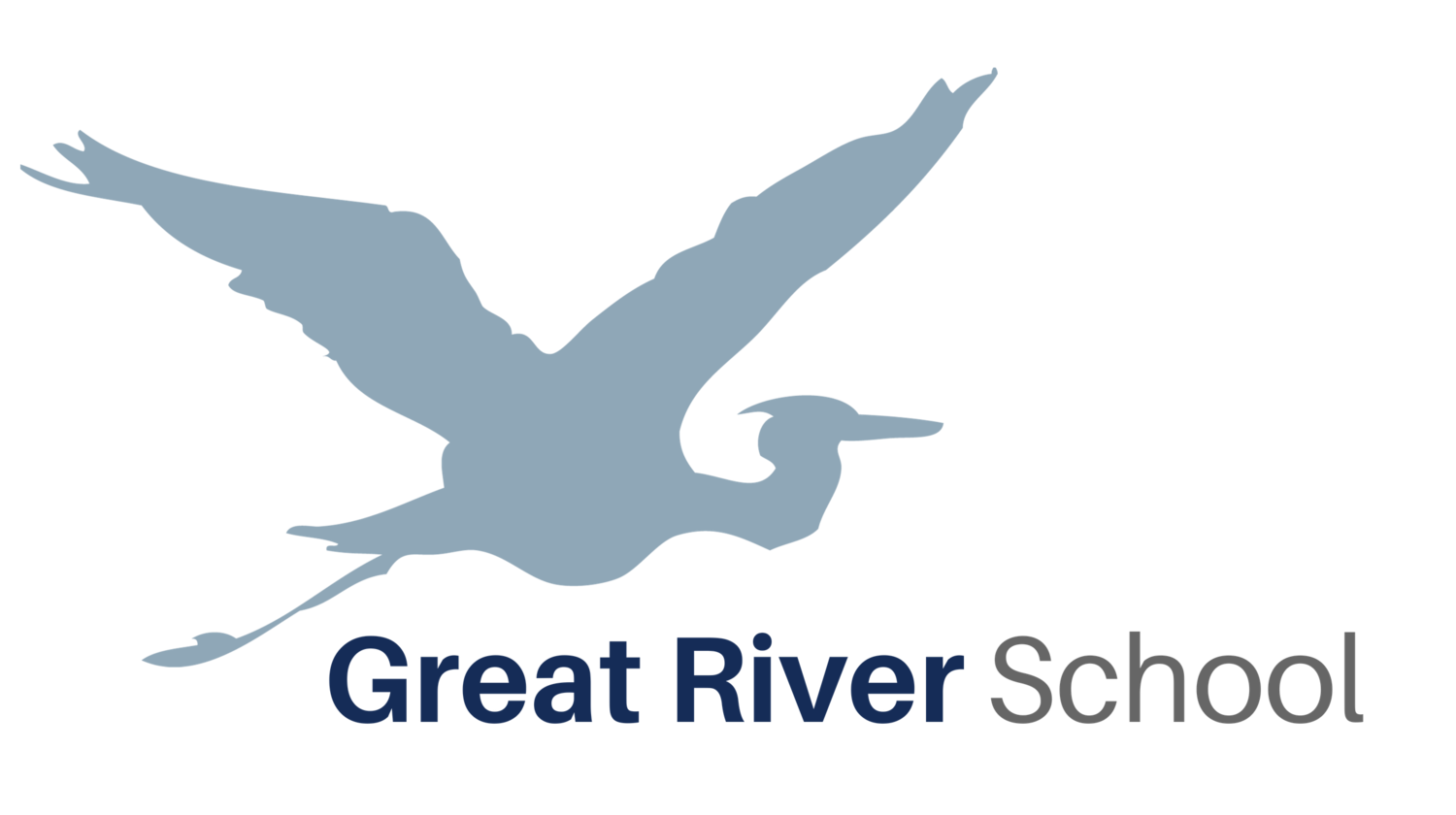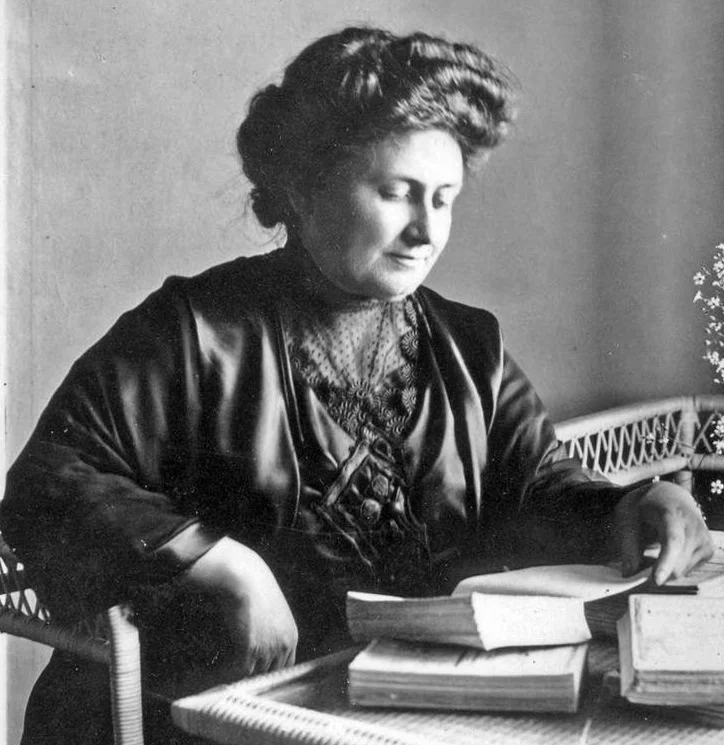More about Montessori
““Children have an absorbent mind. They absorb knowledge from the environment without fatigue. [...] This is the moment in the life of man when we can do something for the betterment of humanity and further brotherhood. ””
Who is Dr. Maria Montessori?
The Montessori approach to education was developed by Dr. Maria Montessori more than 100 years ago, and is today practiced in more than 5,000 schools across the United States. Dr. Montessori's groundbreaking work is rooted in a deep compassion for the children in her care, and developed over many years through careful, scientific observation of how they learned. If you begin to understand the logic behind her vision, you will have a better appreciation for what happens in your child’s classroom.
Learn more about Dr. Maria Montessori at https://montessori.org.au/biography-dr-maria-montessori
These common principles/pillars form the foundation for each Great River classroom community and individual to grow together in. Having a shared community understanding and support of these pillars helps us build a thriving community.
Multi-age classrooms
Montessori Classroom Environment
Physical Environment & Montessori materials
Montessori guides (teachers)
Child directed work
Uninterrupted work periods:
Multi-age Classrooms
Dr. Montessori advocated grouping children in mixed-age settings according to their shared developmental stage. Being able to see the larger arc of their learning—that addition lays the groundwork for multiplication, for example, or that manipulating letters lays the groundwork for reading—provides children with greater meaning and motivation for their learning (Montessori, The Absorbent Mind).
Also, mixed-age classrooms make collaboration more effective, as older, more experienced students can help younger students learn something new. In the process, the older child gains teaching, nurturing and leadership skills, while the younger child gains a peer mentor—and deeper insight into the problem they are exploring (Lillard, Montessori Today).
At Great River School, our Elementary age groupings are:
Lower elementary, for children ages 6–9 (grades 1–3).
Upper elementary, for children ages 9–12 (grades 4–6).
Group Work & Grade Levels in The Multi-age Classroom
In From Childhood to Adolescence, Dr. Montessori shared that “At this age, children are strongly attracted to group work and to the social life of their peers.” In our classrooms, many materials and projects are conducive to group work. They need wider boundaries for social experience. Consequently, peer learning and collaboration can occur even between grade levels for children with shared interests, and older children have the opportunity to model skilled social behavior and leadership.
The Montessori Classroom Environment
Walk into a Montessori classroom, and you’ll notice its differences from a typical school classroom. First, you won’t find a desk for each student (although you will find a number of tables and other working areas). That is because the students move freely during the extended work periods, choosing their own work within the framework provided by their guide (Montessori, The Secret of Childhood).
Students have lots to choose from; the walls are lined with low shelves, all filled with neatly arranged, custom-made learning materials from the Montessori curriculum areas of geography, history, language, mathematics, geometry, biology, music and art.
Perhaps the most striking feature of the Montessori experience is seeing a classroom of Elementary students, productively occupied with their chosen tasks. Some students work individually, others in groups.
Where are the teachers (at GRS we call them guides) in this picture?
Great River School usually has two adults in each classroom: a Montessori-trained lead guide and an assistant. During the extended work periods, you will often find them demonstrating a work to a student or a small group of students, or perhaps assisting a student who asks for guidance. Although guides do lead group activities (such as facilitating class community meetings), the emphasis is on individualized learning and small group lessons.
The Physical Environment
In Montessori education, the physical environment is key. Let’s look at three features of the Montessori environment: atmosphere, materials, and mixed-age learning.
Atmosphere. The classroom is a calm, pleasant space in which the child is free to develop himself using a multitude of interesting materials tailored to stimulate their curiosity and intellect. A connection with nature and freedom of movement are essential elements of Montessori classrooms. Dr. Montessori believed that mental development must be connected with movement; consequently, in Montessori schools, students have more freedom of movement than in traditional mainstream schools and select their work (The Discovery of the Child).
Materials. Montessori materials are the specially designed, hands-on learning tools Montessori created and materials created with the same principles of learning. These materials are:
Self-teaching (children learn by using them independently)
Purposefully designed to isolate concepts (like size, color, or quantity)
Control of error built in (so children can correct themselves without adult intervention)
The materials, called “works,” are hands-on and very interesting to children. They have the quality of making mistakes self-evident to students (i.e., auto-correction) so that students can use their own problem-solving abilities to find the solution. This frees students to learn through manipulating the materials, rather than relying on constant instruction and correction from the teacher (Lillard, Montessori: A Modern Approach).
This independence also allows the student to know for themself. Montessori observed that children had a deep sense of wonder and satisfaction that comes from discovering new ideas. These materials are designed to meet the child’s developmental needs. “Correct use of Montessori materials guides the child’s minds from the concrete to the abstract, whence children’s creative imaginations can take over,” according to Montessori education pioneer Paula Polk Lillard (Montessori Today).
The Montessori Teacher (we call them Guides)
A good way to begin to understand Montessori education is to examine the role of the guide in creating an environment for student exploration and learning.
The art of teaching in Montessori lies not in clever lesson planning, but rather in really knowing and observing each child and understanding what they need to grow. The Montessori teacher has three main tasks: observation, instruction, and skillful self-restraint. They know when to guide the child, and when to follow their natural interests.
Observation. Montessori education is based on scientific observations of human development. Dr. Maria Montessori, a scientist and a medical doctor, based her approach on thousands of hours of observation of children and a lifetime of experimentation and refinement, developing a scientific model of human development and an education approach that supports fully realized human potential (Montessori, The Absorbent Mind).
Montessori guides use this observation and knowledge of child development to tailor their approach depending on the needs of the child. Montessori guides are trained to notice things such as:
which materials seem to attract the child
how long the child remains interested in a particular work
what level of mastery the child has achieved with that work
whether the child was developmentally ready to receive a particular instruction
what skill areas the child needs to practice
“From the child itself [the teacher] will learn how to perfect himself as an educator” Dr. Montessori said.
Giving instruction. The purpose of instruction is to spark a child’s interest in a way that makes the child want to find their own answers to subsequent questions. Instruction is given through Great Lessons—stories that offer a big-picture framework that serve as a starting point for more detailed investigation (Lillard, Montessori Today).
Dr. Montessori said, “The protection of the children’s right not to be interrupted when productively occupied is key to the children’s development of concentration and interest in their work” (Montessori, The Absorbent Mind).
Skillful self-restraint. Dr. Montessori said, “To stimulate life leaving it then free to develop, to unfold—herein lies the first task of the educator. In such a delicate task, a great art must suggest the moment and limit of the intervention” (Montessori, The Absorbent Mind).
Knowing when to offer helpful guidance, rather than over-correcting or overly directing a child’s work, requires faith in the “exploring spirit” of the child and a good measure of humility. Montessori had deep respect for the “triumphant inner force” which “sends the world forward,” and nurtured it in her schools.
Uninterrupted work periods
Montessori education is based on the development understanding that children are naturally curious and want to explore the world around them. Because of this, Montessori educators focus on providing the students with meaningful opportunities to satisfy their natural desire to learn—and then, they get out of the way. In a Montessori classroom, when children are given a certain amount of freedom to direct their own learning, they tend to engage in their learning more deeply, and for longer periods of time, in longer work periods, which occur each morning at GRS. These opportunities for self-directed learning gives students the opportunity to develop self-discipline and develop strong executive functioning skills as they learn to make responsible choices.
Sources
Lillard, Paula Polk. Montessori Today: A Comprehensive Approach to Education from Birth to Adulthood. Schocken, 1996.
Lillard, Paula Polk. Montessori: A Modern Approach. Schocken, 1972.
Montessori, Maria. The Absorbent Mind. 1949.
Montessori, Maria. The Secret of Childhood. 1936.
Montessori, Maria. The Discovery of the Child. 1948.
Montessori, Maria. From Childhood to Adolescence. 1948.


